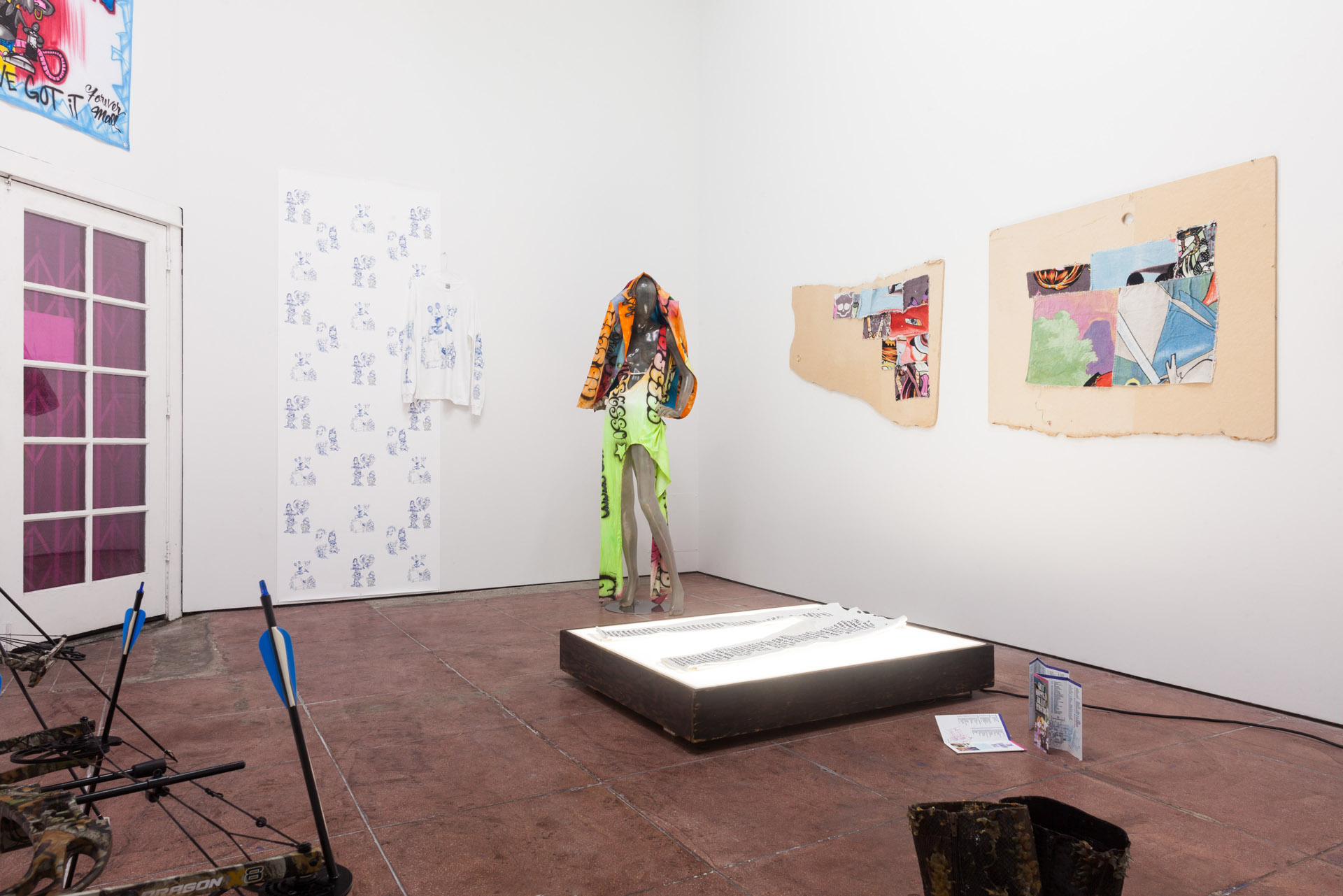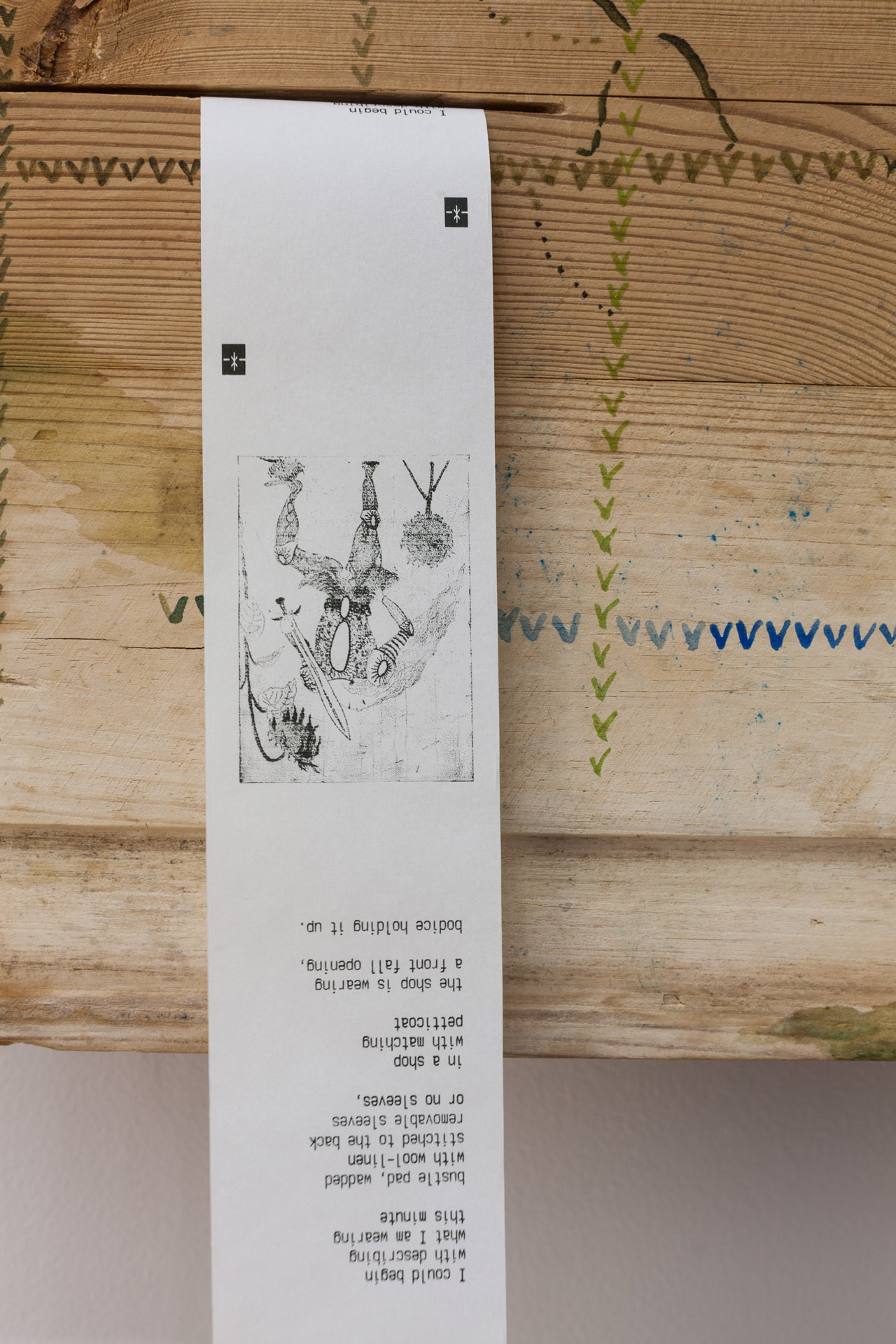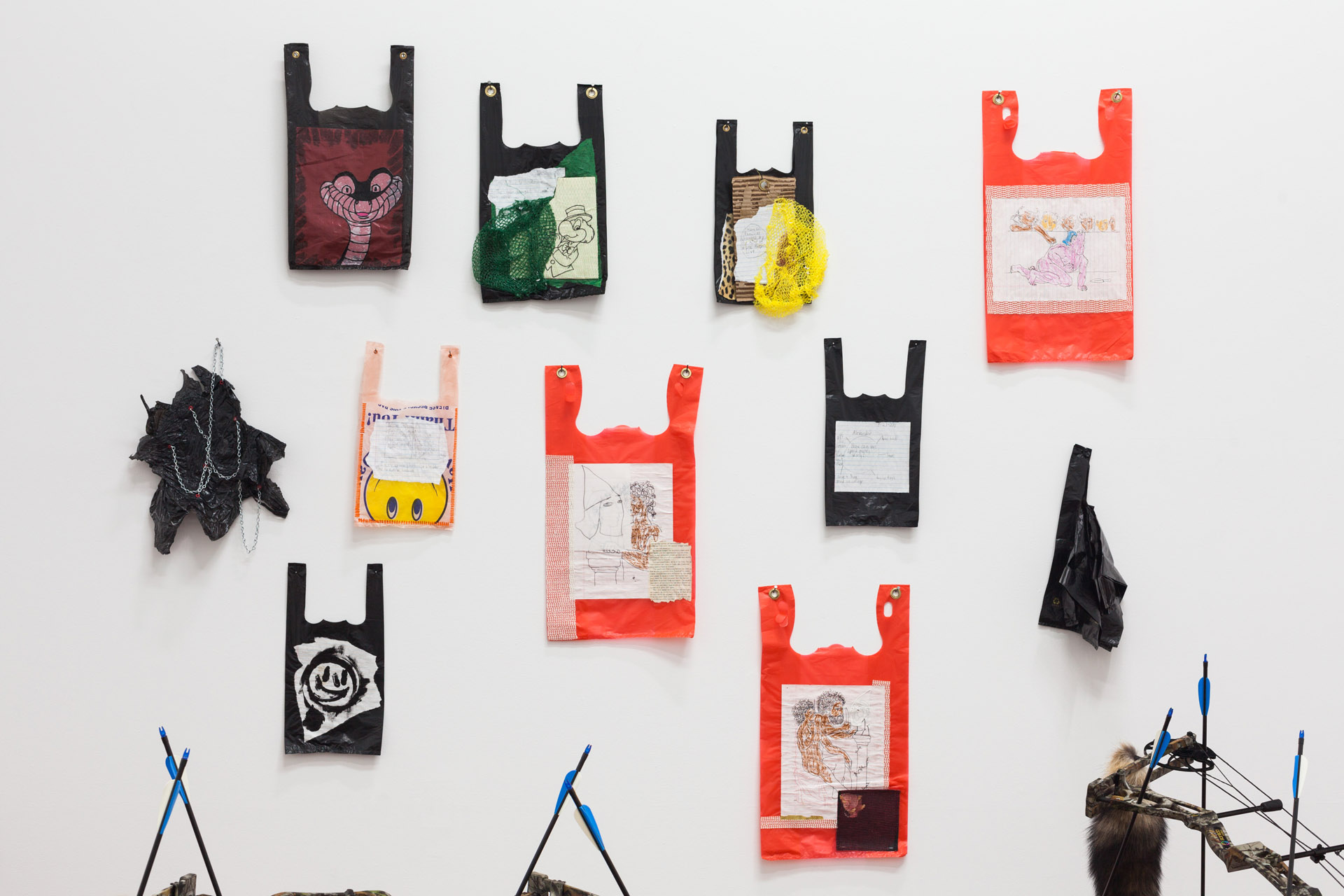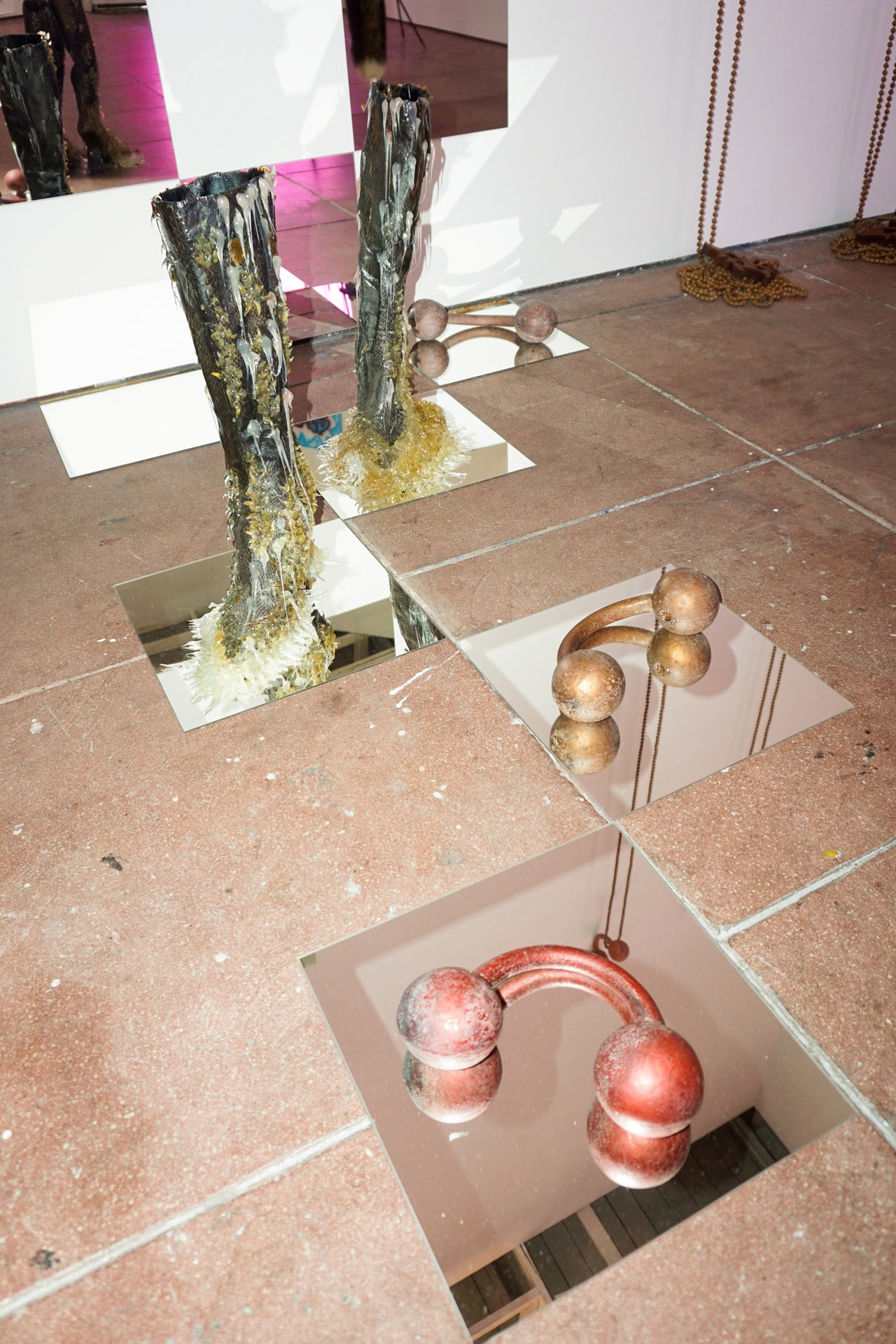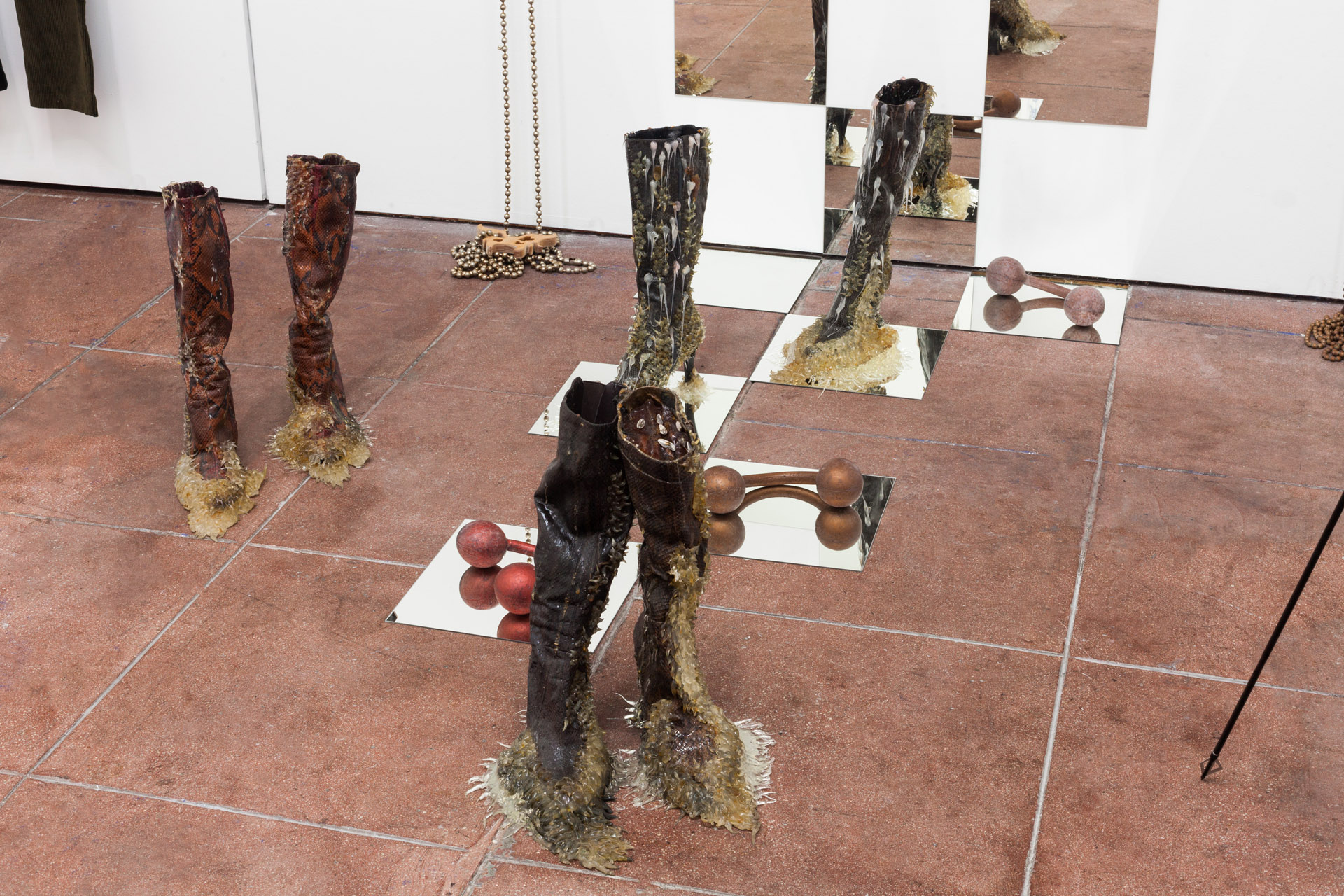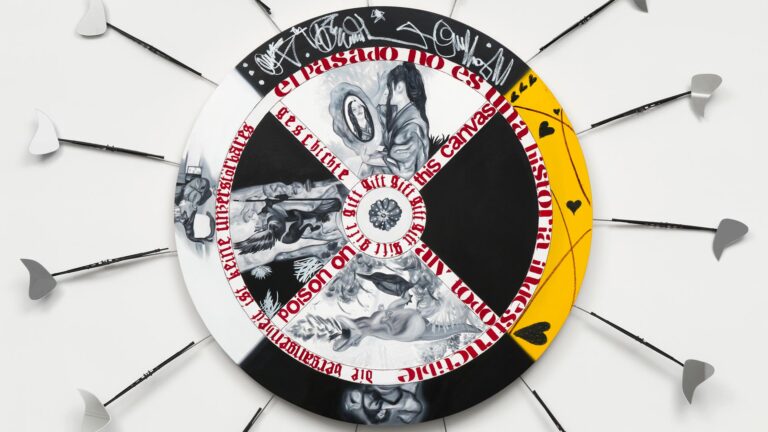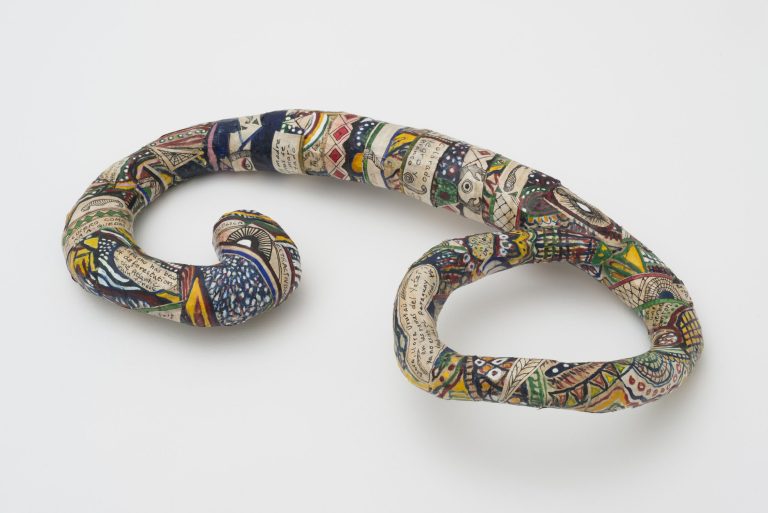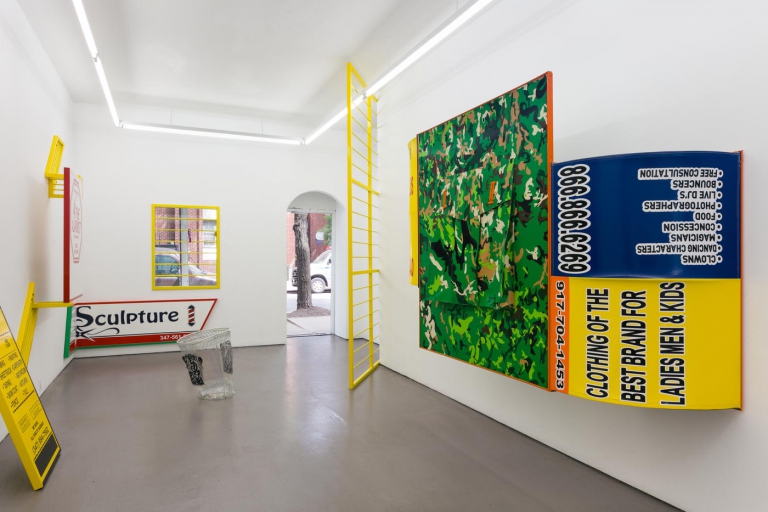Artists: Ginssiyo Apara, Sessa Englund, Hannah Heilmann, Esben Weile Kjær, No Sesso, Valentina Vargas, Pedro Verdin, Agatha Wara
Exhibition title: Forever Mall
Curated by: Anna Frost
Venue: Shoot the Lobster, Los Angeles, US
Date: August 21 – Oct 16, 2020
Photography: images copyright and courtesy of the artists and Shoot the Lobster, Los Angeles
Forever Mall presents a group of works that deal with shopping culture, waste, bling, strip mall paraphernalia and the seductive pull of a highly mediated event economy. The space has a low-fi mise-en-scene vibe, like an abandoned shop-in-shop unit, where mall driftwood, precious and personalized commodities, and future-like nostalgia blend together.
Danish artist Esben Weile Kjær’s practice spans sculpture, video, and performance. He is attentive to consumerism, nightlife, power, youth, freedom, and the production strategies of pop culture. His performances often take elements from recognizable forms of display – think of the protest or rave – and blend specific props (like lasers, confetti, etc.) to bring about heightened emotional states.
Some of his recent work deals with the disappearance of tangible currencies and for this exhibition he has populated the space with a group of animal-like compound bows. The bow and arrow were once the pinnacle of the barter economy of Hunter-gatherer culture 10,000 B.C. Now it has morphed into its prey.
Above hangs a custom-tailored green suit made for the fictitious Robin Hood-esque Julian Luxford; the artist’s alter ego. Luxford and his image is currently disseminating through merch, larger than life blow up dolls and banners at the up-scale department store Magasin Du Nord in Copenhagen’s central square.
Philly-based artist Ginssiyo Apara has spent the last couple of years repurposing plastic shopping bags and trash-bags as his preferred canvas. On these throw-away and ubiquitous objects he paints and collages everyday tableaus, blending seemingly harmless childhood cartoon characters with more serious messaging.
Pedro Verdin uses an aesthetic borrowed from and sometimes directly made by the embroidered and embossed Your-Logo-Here hats and shirts shops you find at your local swap meet. Growing up near the Sun Valley mega market Lankershim Swapmeet his works are inspired by this cacophonous atmosphere of unique merchants. The pieces become pseudo-readymades, where Verdin relinquishes creative license and hands the product authorship back to the Make it Yourself vendor, who sources designs from their archive of styles and trends from past and present.
Danish artist Hannah Heilmann works across performance, installation, fashion, and sculpture. In her solo exhibition “My Laura Ashley Dresses”, Heilmann excavated the brand history of the British women’s label Laura Ashley, uncovering its development alongside the legacy of colonialism, gender, and consumer habits.
Her work here consists of patchwork pieces of deconstructed franchise beach towels and a repurposed receipt machine she has painted using motifs and figures from her fashion research. Rather than tallying up your order, this instrument rings out a poem along with a rasterized version of a copper etching she made.
Valentina Vargas, based in San Francisco, has lent her talent in ballpoint pen drawings to a wallpaper size piece and matching sweatshirt featuring familiar iconography inspired from gum ball machine rub on tattoos and imagery taken from childhood Disney characters with an attitude.
Bolivia-born, Florida-raised artist Agatha Wara presents new sculptures based on a reproduction of a 1989 brochure from the then glorious Florida Mall located in her adolescent hometown of Orlando. 1989 was also the year her and her family left Bolivia in the middle of the country’s worst financial crises to seek a better life in the US. The textile and text piece is adapted from a New York Times article from that same year describing the crippling inflation and economic turmoil in Bolivia.
Sessa Englund’s sculptures live somewhere between function and myth. Many of her works resemble everyday crafty and highly aestheticized vernacular design, mixed with snakeskin boots and oversized piercings, small troll tokens and large latex beast-like skin. Her work has a folklorish familiarity to it, reexamining our relationship with everyday objects that may be more queer than we notice at first glance.
Forever Mall also presents archive pieces from the LA-based and future facing fashion house No Sesso, a line that challenges the conventions of fashion, art, culture and design. A community powered brand that focuses on empowering people of all colors, shapes, and identities, No Sesso has stolen the spotlight with collections that feature a wide range of prints, fabrics, reconstructed materials, and most notably, their signature hand embroidery.
All these artists are attentive to built (commercial) environments within their practice, such as the mall, and the psychological, affective, and experiential influences that determine these spaces. Rich in symbolic influence, working with ambiguous mediums and narratives, they articulate a meaningful response to consumerism within the twenty-first century, either by looking at the history of branding as a standard marketing strategy, using sculpture to consider the movement of consumer goods around the world or applying meaning to ubiquitous objects.
This exhibition is generously supported by Statens Kunstfond and Nordisk Kulturfond



